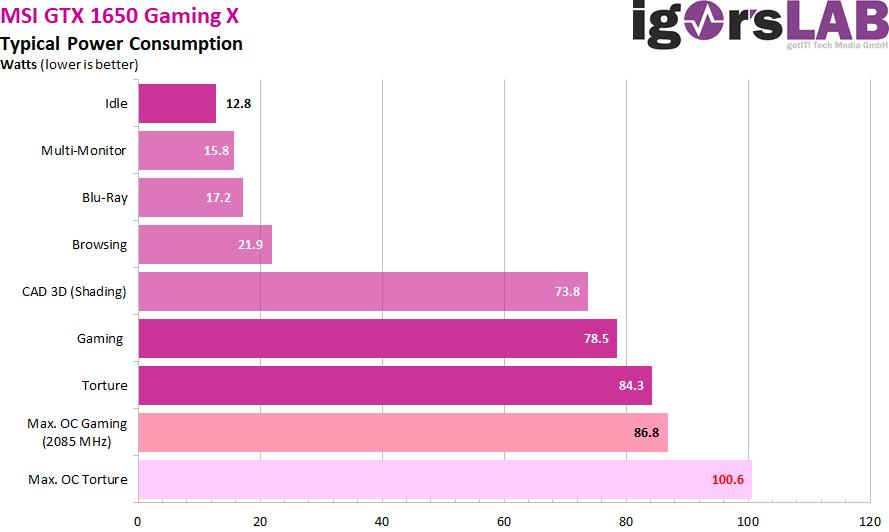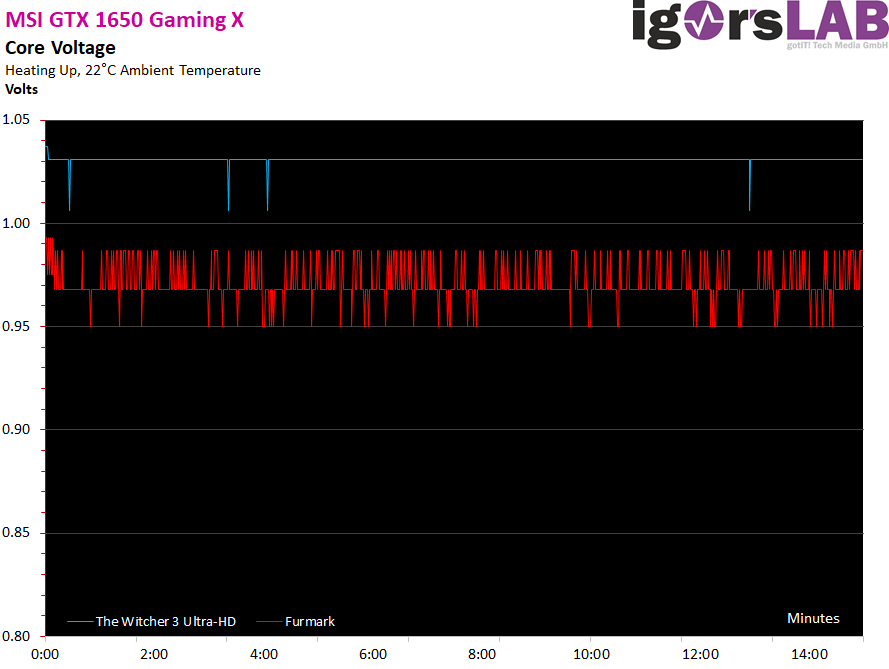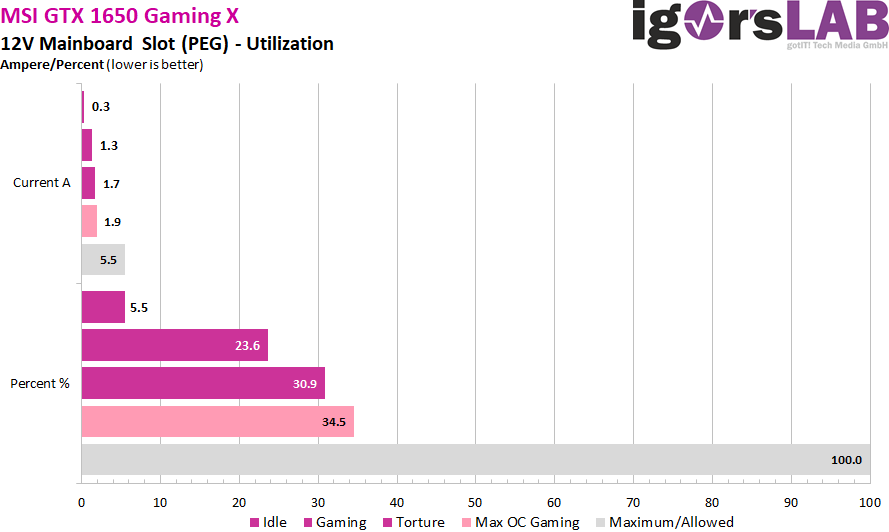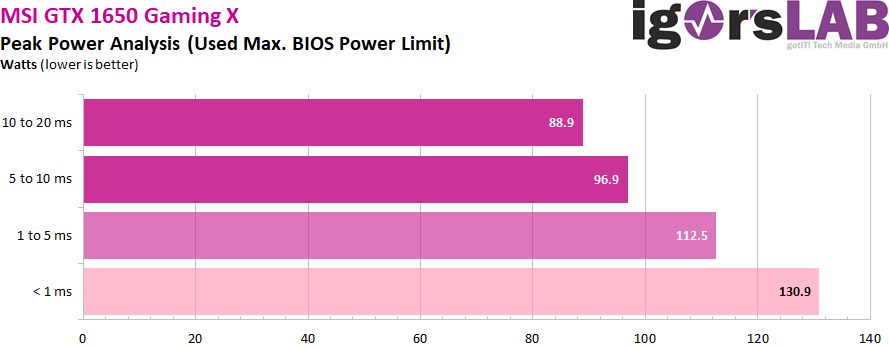Power consumption and loads
The power consumption of the MSI GTX 1650 Gaming X with just under 13 watts in the idle is not quite where you would have expected it. Because on the 3.3-volt line, approx. 4 watts, whether in idle or under full load. All the maps I have tested in the last 1-2 years no longer have this rail, or at least only to a minimum extent (< 1 Watt) genutzt – hier jedoch wird gleich eine ordentliche Vorspeise draus, warum auch immer. 1="" watt)="" genutzt="" -="" hier="" jedoch="" wird="" gleich="" eine="" ordentliche="" vorspeise="" draus,="" warum="" auch=""></ 1 Watt) genutzt – hier jedoch wird gleich eine ordentliche Vorspeise draus, warum auch immer.>
MSI uses a slightly higher power limit for this card and also sets the power target for the factory state to 85 watts. The measured power consumption for gaming is still slightly lower at just under 79 watts, but in the stress test the 85 watts are almost reached. With the maximum overclocking, the card approves for gaming almost 87 watts and only fully exploits the maximum power limit stored in the BIOS during the stress test.

Here is a short excerpt from what the manufacturer of this card has given in the firmware limits:

The voltages are in the expected range, but do not reach 1.05 volts in the cold state. The average value over the entire runtime tends towards 1,031 volts for the cards and remains very constant in gaming.

The load distribution on the rails is interesting, because the maximum 5.5 amperes of the motherboard slot are never exceeded. Balancing has been solved in an exemplary manner, as the phases are mainly supplied from the external connection.

Power supply design and peak loads/currents
As I have already demonstrated in detail in my basic article "The fight of graphics card against power supply – power consumption and load peaks demystified", there are also temporarily higher loads in the millisecond range, which are unfavorable in case of unfavorable designed or improperly equipped power supplies can already lead to unexplained shutdowns. The TBP (Typical Board Power) measured by the graphics card manufacturer or the reviewers does not really help for a stable design of the system.

Peaks with intervals between 1 and 10 ms can lead to shutdowns with very fast-reacting protective circuits (OPP, OCP), especially for multi-rail power supplies, although the average power consumption is still in the norm. For this card with factory OC I would therefore calculate 100 watts, but at the maximum OC with 120 watts, in order to have enough reserves in case of a case. A short excerpt with high resolution now shows us the 20 ms measurements (10 S intervals), how I run them automatically for valuation:
Detailed recording of average power consumption and flowing currents
As usual, I now also set aside the power consumption and the flowing currents as detailed graphics of my oscillograph measurements. A service that hardly anyone else offers and which shows how the maps "tick" in detail. Note the slightly higher load of 3.3 volt rail:
- 1 - Einführung, Unboxing, Chip-Details und Testsystem
- 2 - Tear Down: Platinen- und Kühleranalyse
- 3 - Ashes of the Singularity
- 4 - Battlefield V
- 5 - Destiny 2
- 6 - The Division 2
- 7 - Far Cry 5
- 8 - Forza Horizon 4
- 9 - Ghost Recon
- 10 - Grand Theft Auto V
- 11 - Metro Last Light
- 12 - Shadow of the Tomb Raider
- 13 - The Witcher 3
- 14 - Wolfenstein II
- 15 - Leistungsaufnahme und Netzteilempfehlung
- 16 - OC, Taktraten, Temperatur, Infrarot
- 17 - Lüfter und Lautstärke
- 18 - Zusammenfassung und Fazit


















































Kommentieren